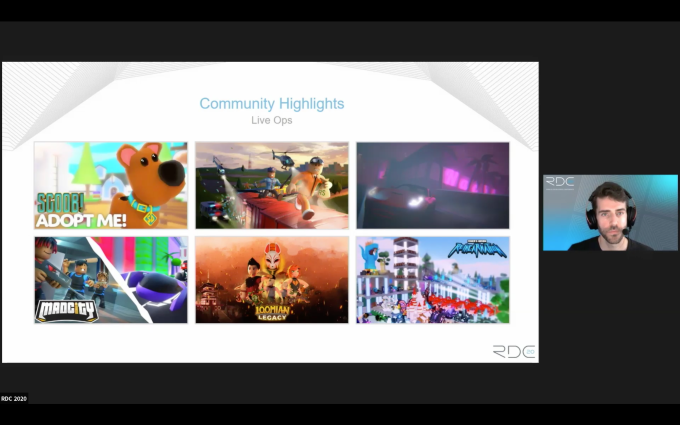For the past 10 years, Disrupt has been a place for the tech community to come together to connect and learn. And while thousands of techies won’t be able to descend on the Moscone Center this year, the Disrupt show will most certainly go on.
On the conference’s 10th anniversary, we’re coming to you virtually. This makes Disrupt 2020 the most accessible Disrupt ever. But just because it’s virtual doesn’t mean that the fundamentals of the show will change. Disrupt attendees will, of course, have full access to the Disrupt stage and the Extra Crunch stage, as well as virtual networking, interactive Q&A, a digital Startup Alley, and more. We’ll also be delivering sessions focused on Europe and Asia that are friendly for their respective time zones. More to be announced on that soon!
Some things have changed. For one, the show is running for five days instead of three, and each day will be shorter, running from 9:00am PT to approximately 1:30pm PT. We’ve built networking time directly into the agenda, and as with past years, CrunchMatch (our system for matching investors with entrepreneurs and connecting all attendees) will be running throughout the whole show. New this year are sessions where venture capitalists evaluate and suggest fixes for Disrupt 2020 attendees pitch decks. More information about the Pitch Deck Teardown is found here.
We have some amazing speakers booked for this year, with more to be announced soon.
Today, we’d like to share with you a first look at the Disrupt 2020 agenda. More speakers will be added to this agenda, but we couldn’t resist giving you a peek under the hood.
Take a look!
Monday, September 14
Love In The Time of COVID-19 with Whitney Wolfe-Herd (Bumble)
Whitney Wolfe Herd was on the founding team at Tinder before charting her own course with Bumble. The dating app, which currently has more than 100 million users, puts the brand front and center. In the past year, following a scandal at parent company Badoo, Wolfe Herd has taken the reigns of the entire Magic Lab corporation, which owns Badoo, Bumble, Lumen and Chappy dating apps. Hear from Wolfe Herd about the future of online dating and how she’s stayed down to earth during her meteoric rise to the top of the dating industry. Disrupt Stage
How to Raise Money in a Dumpster Fire with Anu Hariharan (Y Combinator), Garry Tan (Initialized Capital), and Hans Tung (GGV Capital)
Garry Tan started his first company, Posterous in 2008, so the Initialized Capital co-founder knows a thing or two about economic crises and how they can affect fundraising. Hans Tung, GGV’s Midas-list dealmaker has seen downturns on three continents in his tenure investing in the US, China, and Latin America for the globe-spanning investment firm, while Anu Hariharan has spent the last decade putting companies through their paces at BCG, A16Z, and most recently, YC. They’ll be delivering the goods on how to get that gelt during this raging dumpster fire of a year. Extra Crunch Stage
The Business of Quantum with Alan Baratz (D-Wave Systems), Peter Chapman (IonQ), and Itamar Sivan (Quantum Machines)
Quantum computing is having a moment. We now have limited but working hardware available from a number of vendors and there is a growing startup ecosystem that is creating a novel hardware approach and a new class of software tools to run these machines and program them. In this panel, we’ll talk about what’s next for quantum computing, the challenges ahead and the roles startups play in fulfilling the promise of this technology. Disrupt Stage
Planning for Your Startup’s Exit: The How’s and the When’s with Tracy Young (Coyote Family) and Michelle Zatlyn (Cloudflare)
When Cloudflare IPO’d last year it certainly wasn’t the end of its 10 year journey, and nor was it PlanGrid’s when it was acquired by Autodesk in 2018. Cloudflare’s Michelle Zatlyn and PlanGrid’s Tracy Young will guide us through both their respective company’s journey and their own as founders. Extra Crunch Stage
Pitch Deck Teardown with Charles Hudson (Precursor Ventures) and Aileen Lee (Cowboy Ventures)
Talk through the nuts and bolts of what makes a great deck (or not) with top investors as they go through your submitted pitches live on stage. Extra Crunch Stage
Startup Battlefield Competition – Session 1
TechCrunch’s iconic startup competition is back, as entrepreneurs from around the world pitch expert judges and vie for the Battlefield Cup and $100,000. Disrupt Stage
Zooming Into the Future with Eric Yuan (Zoom)
Zoom has not only replaced the office meeting room, but the family dinner table and local bar as well. Hear from Eric Yuan, Zoom’s founder CEO, about how his company has handled historic growth thanks to COVID-19, and what’s next for the popular enterprise, and consumer brand. Disrupt Stage
How Things Get Built in the Middle of a Pandemic with Kate Whitcomb (Chrysalis Cloud), Steven Yang (Anker), and speaker to be announced
How has COVID-19 impacted how and where the stuff we use gets built? We’ll hear from Anker CEO Steven Yang and Chrysalis Cloud CEO/former HAX Partner Kate Whitcomb to learn more about how the world of manufacturing has had to adapt in 2020 and what might lay ahead. Extra Crunch Stage
How to Scale a Tech-Powered Non-Profit with Tiffani Ashley Bell (The Human Utility)
We speak to Tiffani Ashley Bell, founder of The Human Utility, on what it took to build a platform that helps people pay their water bills and how tech-powered nonprofits should think about scaling for social impact. Extra Crunch Stage
Tuesday, September 15
Getting to $100M ARR with Vineet Jain (Egnyte), Sid Sijbrandij (GitLab), and Michal Tsur (Kaltura)
TechCrunch speaks with three private companies that have reached the $100 million ARR (Annual Recurring Revenue) mark. We’ll explore what they had to break, and rebuild in their companies as they scaled, and what they learned as they left the early-stages of startup life and built companies that are nearly ready to go public. Extra Crunch Stage
Looking into the Future with Roelof Botha (Sequoia Capital)
Botha is the U.S. head of Sequoia Capital. It’s a powerful position but it also comes with great responsibility, including to help steer the company’s portfolio companies through the pandemic and its ripple effects. Hear how Botha is advising founders and why, even in trying times, he expects startup founders to reshape the world. Disrupt Stage
How to Craft your Pitch Deck for 2020 with Ann Miura-Ko (Floodgate), Lo Toney (Plexo Capital), and speaker to be announced
Today you might be pitching by email, audio, video, VR or IRL to all types of investors across the globe. How do you tell your story in a way that reaches the right people the right way without you diverting too much time from building your company? The traditional deck of powerpoint slides still has a place, but you need to manage many more opportunities for fundraising, too. We’ll talk through the latest tactics that founders are using around the world. Extra Crunch Stage
Startup Battlefield Competition – Session 2
TechCrunch’s iconic startup competition is back, as entrepreneurs from around the world pitch expert judges and vie for the Battlefield Cup and $100,000. Disrupt Stage
Pitch Deck Teardown with Niko Bonatsos (General Catalyst) and Megan Quinn (Niantic)
Talk through the nuts and bolts of what makes a great deck (or not) with top investors as they go through your submitted pitches live on stage. Extra Crunch Stage
How to Raise Your First Dollars with Alexa von Tobel (Inspired Capital Partners), Hunter Walk (Homebrew), and Ted Wang (Cowboy Ventures)
Deciding how to go about getting your initial funding is always a tricky subject, as the wrong move could adversely impact your young company. In this session we’ll hear from experts who’ve shepherded multiple companies from the earliest to the latest fundraises. Extra Crunch Stage
The Next Generation of Media with Morgan DeBaun (Blavity) and Angie Nwandu (The Shade Room)
Blavity and The Shade Room have both demonstrated that Black audiences are looking for digital publishers who speak to their experiences and interests. We’ll talk to their founders about how they did it, how they’re building scalable businesses and how other publications can do a better job of reaching diverse audiences. Disrupt Stage
How to Find the Right Users as the World Burns with Brian Balfour (Reforge), Elliot Robinson (Bessemer Venture Partners), and Susan Su (Sound Ventures)
Users in 2020 are split across more and more platforms and splintered by geographies. They’re also jaded about marketing and have less money than before the pandemic. So how do you find the right customers and audience members to build a business with your limited time and budget? Hear from the experts on big growth marketing trends and cutting-edge tactics in key acquisition channels including SEO, social, email and more. Extra Crunch Stage
In the Big Leagues with Delane Parnell (PlayVS)
In a few short years, PlayVS has put eSports leagues in high schools across the country, partnering with gaming giants and school systems. The startup has raised $96 million with founder Delane Parnell at the helm, now they’re looking to expand their ambitions. With traditional high school athletic programs likely to be deeply impacted by COVID-19, will eSports see even greater adoption? Disrupt Stage
Wednesday, September 16
Making Bank with Mitchell Elegbe (Interswitch)
In 2002 Mitchell Elegbe founded digital finance startup Interswitch to connect Nigeria’s banking system. More than a decade later, his company is valued at over $1 billion and supports billions in digital payment activity across Africa. Interswitch is poised to become Africa’s first major fintech firm to list on a major exchange. Elegbe will discuss the future of digital finance and IPOs coming from Africa. Disrupt Stage
The Changing Landscape of Property Tech with Connie Chan (Andreessen Horowitz), Merritt Hummer (Bain Capital Ventures), and Brendan Wallace (Fifth Wall)
Connie Chan, general partner at Andreessen Horowitz, Merritt Hummer of Bain Capital Ventures and Brendan Wallace, co-founder and managing partner at Fifth Wall are at the center of these changes. These investors will discuss the challenges and opportunities that lie ahead in property tech as well as advice for startups in the industry. Extra Crunch Stage
Little Wires Everywhere with Kerry Washington
Kerry Washington is perhaps best known for her work in Hollywood, but she’s been making a name for herself in tech over the last few years. An investor in The Wing, Community and teeth-straightening service Byte, Washington’s portfolio consists of products and services that aim to give people a voice or improve their quality of life. In this fireside chat, Washington will discuss what brought her into the tech industry, her investment strategy and the rise of streaming platforms. And, as an activist and someone who has spoken up about the lack of diversity in Hollywood, Washington will share her views on diversity, inclusion and equity in tech. Disrupt Stage
Building a Startup During the “Work From Home” Revolution with Sarah Cannon (Index Ventures), Sarah Guo (Greylock), and Dave Munichiello (GV)
We’re delighted to bring together a trio of the world’s best expert investors on the topic and explore this critical trend further. Sarah Cannon is a partner at Index Ventures where she has backed such team productivity tools as Notion, focused messaging app Quill, and Pitch. Next we have Sarah Guo, who is a general partner at Greylock where she has invested in Clubhouse, family benefits platform Cleo and several cybersecurity companies. Finally, Dave Munichiello will join. He is a general partner at GV who has backed Slack, GitLab, Plaid, and a whole lot of other well-known enterprise startups. Extra Crunch Stage
CRISPR in the Post-COVID Era with Jennifer Doudna (UC Berkeley)
What has the global COVID-19 pandemic changed about the biotech industry in general, and CRISPR in particular? Dr. Jennifer Doudna, who co-discovered the revolutionary CRISPR-Cas9 gene editing technique, joins us to discuss the immediate and lasting implications of the novel coronavirus and transformations in genetic science. Disrupt Stage
Startup Battlefield Competition – Session 3
TechCrunch’s iconic startup competition is back, as entrepreneurs from around the world pitch expert judges and vie for the Battlefield Cup and $100,000. Disrupt Stage
Pitch Deck Teardown with Cyan Banister (Long Journey Ventures)
Talk through the nuts and bolts of what makes a great deck (or not) with top investors as they go through your submitted pitches live on stage. Extra Crunch Stage
How Voice Computing Conquered the World with Rohit Prasad and Toni Reid (Amazon)
Amazon’s Alexa creators and heads Rohit Prasad and Toni Reid will join us to discuss the voice assistant’s rise from curiosity to ubiquitous computing platform. The pair will discuss life beyond the smart speaker and where voice computing goes from here. Disrupt Stage
How to Build a Service Marketplace with Andy Fang (DoorDash) and speaker to be announced
Building service marketplaces require companies to serve all sides of the ecosystem, or at least have an understanding of the ecosystem as a whole. In this panel, we’ll explore how to deliver on the value proposition for your customers, business partners and delivery partners, if you have them. DoorDash is a perfect example of running a service marketplace, and its co-founder and CTO Andy Fang is here to tell you how. Extra Crunch Stage
Daphne Koller’s Push to Marry Big Data to Big Pharma (Insitro)
Drug discovery and testing is a complex, fraught process that modern computing methods promise to reinvent — but only with the right data, the right tools, and the right people (and a lot of money). Coursera and Calico veteran Daphne Koller thinks she has all the right ingredients in her new company Insitro. Disrupt Stage
The Black Founder Experience: Tactical Advice for Underrepresented Entrepreneurs with Michael Seibel (Y Combinator) and speakers to be announced
How does the startup experience differ for founders from underrepresented groups? What are the biggest ongoing challenges, and how can they be tackled? We’ll hear from Y Combinator CEO Michael Seibel and two soon-to-be-announced YC founders on their experiences starting companies and raising money as Black entrepreneurs. Extra Crunch Stage
What’s Next for Atlassian with Mike Cannon-Brookes (Atlassian)
Atlassian’s tools have become ubiquitous for software teams around the world, but in today’s world, its collaboration tools also play a wider role inside of many companies. We’ll talk to the company’s co-founder Mike Cannon-Brookes about life after the company’s successful IPO and how he plans to stay ahead of the next set of trends in software development. Disrupt Stage
Thursday, September 17
Greenlighting a New Generation of Storytellers with Ron Howard, Brian Grazer and Tyler Mitchell (Imagine Impact)
Yes, that Ron Howard. One of the world’s most successful actors, directors and producers and legendary producer Brian Grazer have created some of the most iconic films and television shows of the last 35 years (Empire, Arrested Development, and The Da Vinci Code to name a few). But entertainment — like tech — is all about disruption. So, to tap into how it will be created and delivered in the future, the pair have teamed up with Tyler Mitchell for Imagine Impact, Silicon Valley-style accelerators where promising writers connect with mentors to build their stories and take them to the next step — whatever that might be. Imagine Impact signed a deal in June with Netflix to expand that pipeline, so come hear about what else they have planned, and what the three of them think about YouTubers, TikTok and the future of the feature. Disrupt Stage
The Future of SaaS with Maha Ibrahim (Canaan Partners), David Ulevitch (Andreessen Horowitz), and Mike Volpi (Index Ventures)
In 2020 SaaS companies have seen their values drop sharply, and rebound even more quickly. TechCrunch is chatting with a few VCs with deep insight into the SaaS world to talk about which startups are accelerating, lagging, or breaking out. And we’ll explore what’s changed in terms of venture expectations for SaaS companies, and what makes them stand out from their peers when it comes to placing bets. Extra Crunch Stage
How Embedded Finance Represents the Future of Fintech with Hope Cochran (Madrona Venture Group), Ruth Foxe-Blader (Anthemis Group) and Zach Perret (Plaid)
The fintech industry has had a wild couple of years. Consumer fintech startups have been massively successful and managed to attract millions of customers. At the same time, enterprise companies have created the infrastructure that will make finance truly digital, from payments to API-driven integrations and risk assessment. In this panel, we’ll talk about what’s next for the fintech industry. Will tech companies all become fintech companies at some point with embedded financial products? Will new tech giants thrive by powering those embedded financial products? Extra Crunch Stage
Putting Robots to Work with Robert Playter (Boston Dynamics)
In his first public speaking engagement since becoming the CEO of Boston Dynamics, Robert Playter will discuss the company’s transition from research robotics darlings to commercial production. As an employee for more than 25 years, Playter has unique insight into the company’s growth and plans to help robots become an increasingly important driver of our daily lives. Disrupt Stage
Pitch Deck Teardown with Roelof Botha (Sequoia Capital) and Susan Lyne (BBG Ventures)
Talk through the nuts and bolts of what makes a great deck (or not) with top investors as they go through your submitted pitches live on stage. Extra Crunch Stage
Startup Battlefield Competition – Session 4
TechCrunch’s iconic startup competition is back, as entrepreneurs from around the world pitch expert judges and vie for the Battlefield Cup and $100,000. Disrupt Stage
How to Iterate Your Product with Oded Gal (Zoom), Eugene Wei, Tamar Yehoshua (Slack), and Julie Zhuo (Inspirit)
If getting insights on product development from current and former product heads at places like Facebook, Zoom, Slack, and Oculus doesn’t sound like something you’re interested in just get out of tech now. Leave. It’s over. Go work in an insurance company. Get your brokers license. Just do something else. Extra Crunch Stage
How to Build an Alternative Company with Seth Besmertnik (Conductor), Aniyia Williams (Zebras Unite), and Hays Witt (Driver’s Seat Cooperative)
Beyond raising traditional venture capital and beyond the pursuing-growth-at-all-costs strategy, there are people in the startup ecosystem that are finding success through less mainstream avenues. Conductor CEO Seth Besmertnik, Driver’s Seat CEO Hays Witt and Aniyia Williams of Black & Brown Founders and Zebras Unite, are three of these people. These founders have all taken alternative approaches in their entrepreneurial journeys, whether that’s been forming as a cooperative, buying back a startup from a tech giant and then turning it into a majority employee-owned operation or converting into a cooperative fund that invests in startups tackling social issues. In this discussion, you’ll learn how to build a company that puts profits and users first, and VCs last. Extra Crunch Stage
Friday, September 18
The State of Venture with Dayna Grayson (Construct Capital), Renata Quintini (Renegade Partners), and Lo Toney (Plexo Capital)
All three of these VCs hail from among the most powerful investing firms in the country — Lux Capital, GV and NEA. Yet each made the bold choice to strike out on their own, adding to a growing and diverse landscape of investment vehicles across the globe. Hear about why they did it, and learn about the trends that they’re funding as they build their businesses. Disrupt Stage
Making Cents of EdTech in the Coronavirus Era with Mercedes Bent (Lightspeed Venture Partners), Jennifer Carolan (Reach Capital), and Ian Chiu (Owl Ventures)
Edtech has been thrown into the spotlight during COVID-19. But did a scramble to adopt and surge in usage impact the sector for better or for worse? In this session, we’ll hear from investors who have bets in the biggest edtech companies on how the landscape has changed during the pandemic, and what they’re most excited for ahead. Extra Crunch Stage
Keeping Big Tech in Check with Congresswoman Zoe Lofgren
Few know Silicon Valley better than one of its longest-serving lawmakers, Rep. Zoe Lofgren. Both as a defender and critic, Lofgren has led the effort to keep Big Tech in check, not just for her electorate but their internet users around the world. We’ll talk policy, privacy, and other hot-button issues affecting Silicon Valley, now and in the future. Disrupt Stage
How to Reinvent Your Sales Team in 2020 with Brian Ascher (Venrock), Pete Kazanjy (Atrium), and Jill Rowley (Stage 2 Capital)
We’re bringing together the smartest leaders on sales in the Valley to discuss tactics and more. Brian Ascher is a partner at Venrock where for more than two decades he has invested in B2B sales-driven companies like 6Sense, Socrates AI, and Dynamic Signal. Next, Pete Kazanjy is one of the leading startup authorities on sales through his written works like “Founding Sales” and community building while also founding sales performance platform Atrium HQ. Finally, we have Jill Rowley, who has spent decades advising startups on sales and was also an early employee at Salesforce and Eloqua. Extra Crunch Stage
Startup Battlefield Competition – Final
TechCrunch’s iconic startup competition is back, as entrepreneurs from around the world pitch expert judges and vie for the Battlefield Cup and $100,000. Disrupt Stage
Building a Low-Code Unicorn with Howie Liu (Airtable)
Low-code/no-code has been a buzzword for years now, but few companies have taken this idea to its logical conclusion the way Airtable has with its spreadsheet-like interface. With a valuation of over $1 billion, the company is now at the forefront of this movement. We’ll talk to Airtable co-founder and CEO Howie Liu about building a user-friendly low-code service, enterprise sales in the age of COVID-19, and what’s next for the no-code/low-code space. Disrupt Stage
Pass prices for Disrupt are increasing this week – so if you want to get in on this action, get yours today and save up to $300.




 To make this work, Virgin Galactic created carbon fibre and aluminum seats that combine 3D soft material weaves with metallic, rose gold accents and fabrics created in partnership with Under Armour (who also created the custom spacesuits passengers will wear) to ensure that all private astronauts flying on Unity are as protected and comfortable as possible during the parts of the flight where they’ll experience three times the normal gravity of Earth. These custom-fit seats are tailored in terms of sizing to each individual passenger, and feature thoughtful details like a channel in the centre of the headrest that can accommodate pony tails, for instance.
To make this work, Virgin Galactic created carbon fibre and aluminum seats that combine 3D soft material weaves with metallic, rose gold accents and fabrics created in partnership with Under Armour (who also created the custom spacesuits passengers will wear) to ensure that all private astronauts flying on Unity are as protected and comfortable as possible during the parts of the flight where they’ll experience three times the normal gravity of Earth. These custom-fit seats are tailored in terms of sizing to each individual passenger, and feature thoughtful details like a channel in the centre of the headrest that can accommodate pony tails, for instance.
 Throughout the cabin, Virgin used soft materials for this same reason, and there are a total of 17 windows throughout the interior (including three for the two-person crew), with each of the passenger-accessible windows rounded with a soft material ‘halo’ complete with a handhold edge and integrated camera. Virgin has put cameras throughout the cabin, in fact, and each provides high-quality photo capture tuned by imaging experts for the specific lighting conditions of the trip. The thinking here is that all the private astronauts should be guaranteed great documentation of their experience, without having to worry about actually capturing any of that themselves. Virgin says it’ll be providing some of this imagery pretty much immediately upon landing so that spacefarers can share to their social accounts right away.
Throughout the cabin, Virgin used soft materials for this same reason, and there are a total of 17 windows throughout the interior (including three for the two-person crew), with each of the passenger-accessible windows rounded with a soft material ‘halo’ complete with a handhold edge and integrated camera. Virgin has put cameras throughout the cabin, in fact, and each provides high-quality photo capture tuned by imaging experts for the specific lighting conditions of the trip. The thinking here is that all the private astronauts should be guaranteed great documentation of their experience, without having to worry about actually capturing any of that themselves. Virgin says it’ll be providing some of this imagery pretty much immediately upon landing so that spacefarers can share to their social accounts right away. Every seat is a window seat, with one to the side and one above, for taking in the breathtaking views. There’s also a large mirror that covers the entirety of the rear bulkhead separating the cabin from the rocket engine, which provides the astronauts with the ability to check out their zero-G antics.
Every seat is a window seat, with one to the side and one above, for taking in the breathtaking views. There’s also a large mirror that covers the entirety of the rear bulkhead separating the cabin from the rocket engine, which provides the astronauts with the ability to check out their zero-G antics.



